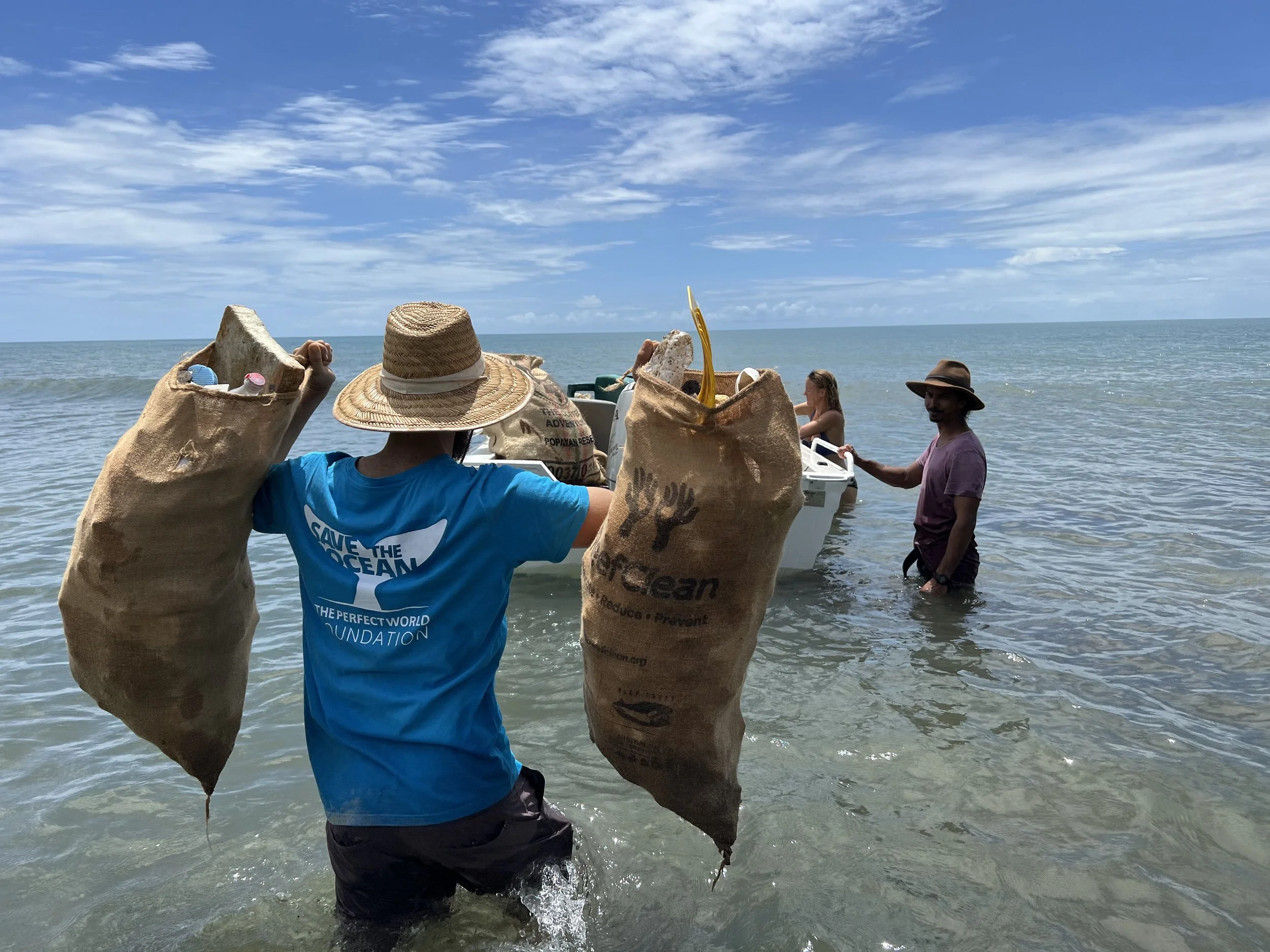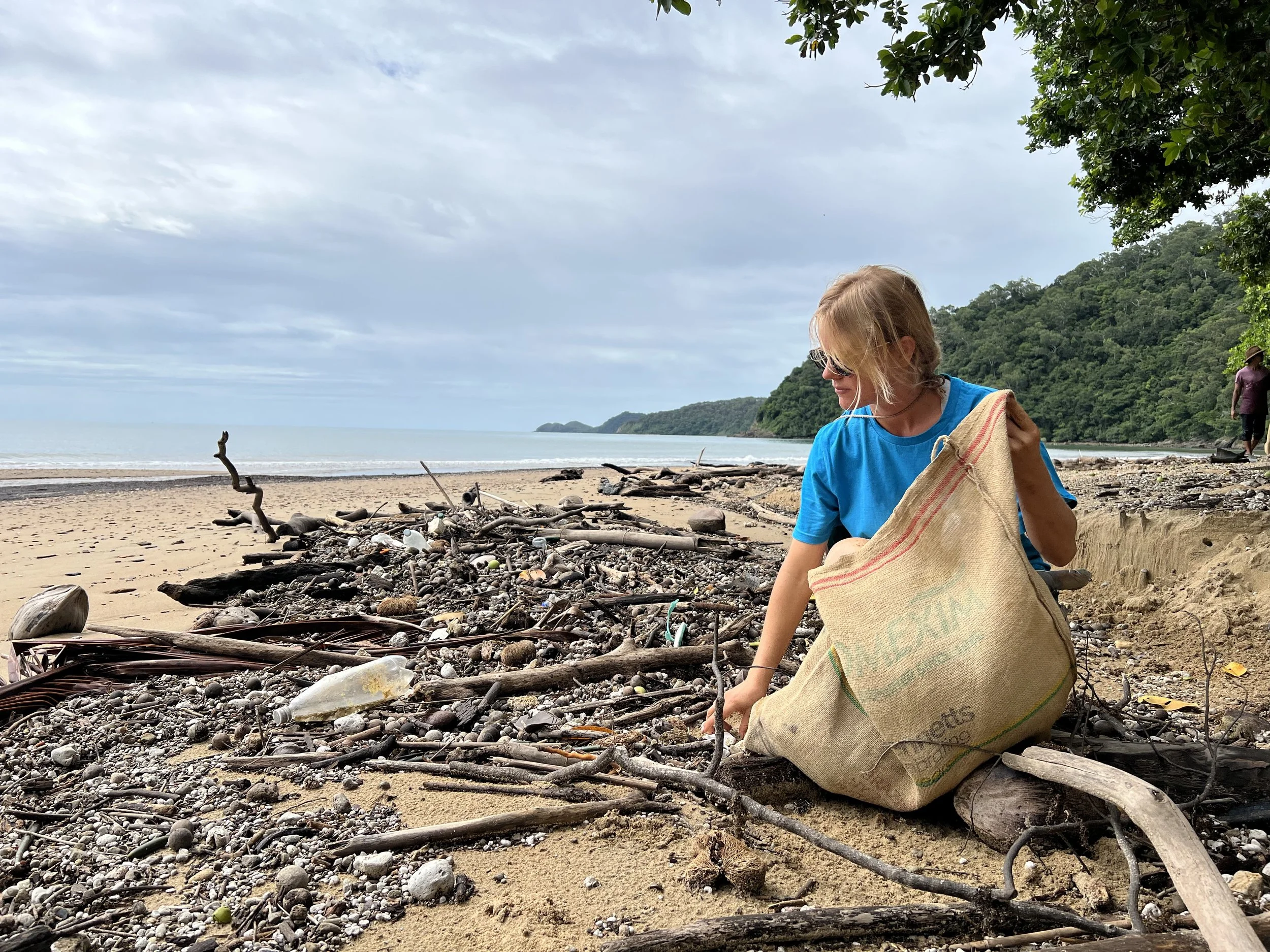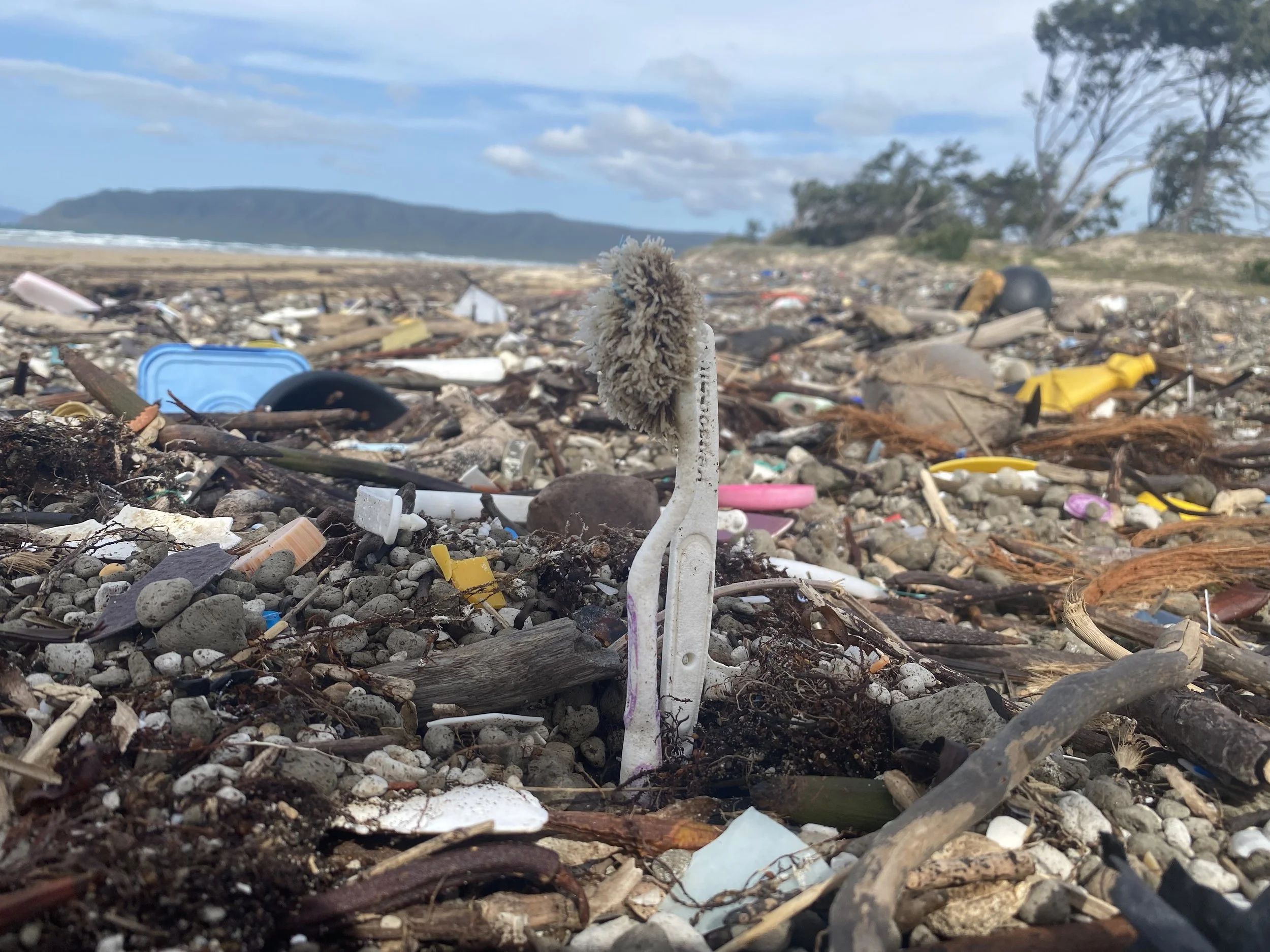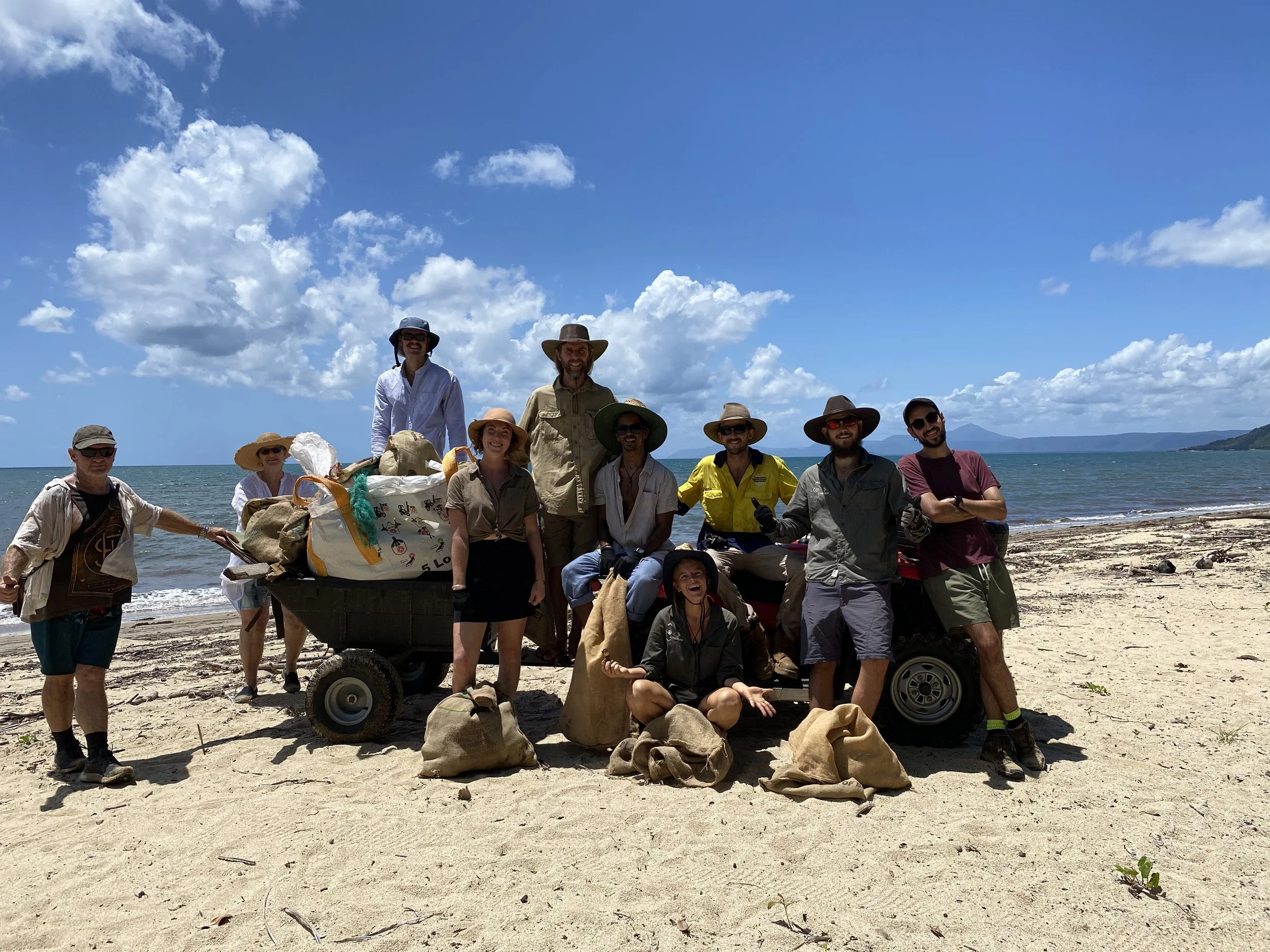Restoring Coastlines, Protecting the Reef: A Tribute to Community and Clean Seas
Over the past few years, ClimateForce has proudly led more than 15 beach cleanups along the stunning northeastern coastline of Queensland—stretching from the tranquil shores of Wonga Beach to the rugged beauty of Noah’s Beach near the Daintree Rainforest. These aren’t just environmental gestures—they are a fundamental expression of our commitment to care for some of the planet’s most precious and climate-vulnerable ecosystems, including the one-of-a-kind Great Barrier Reef.
These cleanups represent more than waste removal. They are moments of connection—between people and place, between effort and impact. Every cleanup is a chance to restore integrity to the coastline, protect marine life, and give back to the very ecosystems that make Queensland’s coastal region a global treasure. They are acts of stewardship that reinforce our broader mission: to regenerate landscapes, defend climate-critical systems, and build resilience at the intersection of land and sea.
While our primary focus remains on restoring native rainforest, reforesting degraded land, and implementing blended systems, we know that the fight for ecological health doesn’t stop at the treeline. So, when the planting season slows, our teams head to the coast—to the beaches, mangroves, estuaries, and tidal zones—to tackle the mounting waste that threatens these vital ecosystems.
Each tide carries with it both life and pollution. As the waters rise and fall, they deposit an array of marine debris: plastic bottles, ghost nets, fishing line, microplastics, packaging fragments, and more. These materials don’t just sit on the surface—they become entangled in coral, trapped in mangrove roots, or ingested by turtles, seabirds, and fish. Some leach toxic chemicals; others break down into microscopic shards that enter the marine food chain. Every piece of plastic is a lasting reminder of the disconnection between consumption and consequence.
The statistics are alarming. According to CSIRO, more than 75% of marine debris found along Australia’s coastlines is plastic, and much of it is capable of persisting for hundreds of years. Once in the ocean, plastic is carried by currents that can sweep it across continents—ultimately concentrating it in reef systems and biodiversity hotspots. Globally, an estimated 14 million tonnes of plastic enter the ocean each year. The Great Barrier Reef, already suffering from coral bleaching, warming waters, and acidification, faces a growing and insidious threat from this silent invader.
Marine plastic pollution doesn’t just affect the charismatic species we often think of—like sea turtles or dolphins. It affects the foundational layers of marine ecosystems: coral polyps smothered by debris, seagrass beds blanketed in synthetic waste, and filter-feeding species ingesting microplastic particles instead of plankton. These impacts cascade up the food chain and undermine the ecological function of the reef itself.
That’s why every beach cleanup matters. Every bag of rubbish collected is a step toward ecosystem repair, a reduction in future plastic breakdown, and a barrier removed from the ocean’s web of life. And it’s why ClimateForce continues to integrate coastal protection into our broader strategy of landscape-level regeneration. Because we know that healthy rainforests and healthy reefs are interconnected—joined by rivers, tides, and cycles of life that know no boundaries.
Our work on land supports resilience in the sea. And our hands in the sand help protect everything in between.
But why do coastlines matter so much?
Because they are living systems. And among the most powerful, complex, and underappreciated of these systems are mangroves—coastal forests that offer far more than meets the eye. They are not just trees growing at the water’s edge. They are ecosystem engineers, natural climate buffers, and biodiversity sanctuaries, all rolled into one.
Mangroves serve as frontline protectors in an age of intensifying climate extremes. Their interwoven root systems act like biological fortresses, absorbing the energy of storm surges, buffering coastlines against erosion, and slowing the inland advance of rising seas. In a single extreme weather event, mangroves can mean the difference between minor flooding and catastrophic damage to homes, communities, and farmland.
But their role doesn’t stop at protection. Mangroves are also natural filtration systems. Their dense root networks trap sediment, microplastics, and pollutants before they can wash out to sea. This not only prevents the degradation of adjacent ecosystems but also supports healthier marine habitats, including seagrass beds, mudflats, and coral reefs—ecosystems that underpin fisheries, tourism, and coastal economies.
And perhaps most impressively, mangroves are among the planet’s most efficient carbon sinks. Their soils are rich in organic carbon, and their slow-decaying biomass locks away atmospheric CO₂ for centuries. Per hectare, mangrove forests sequester up to four times more carbon than tropical rainforests, making them indispensable allies in the fight against climate change.
At ClimateForce, we witness the power of these systems firsthand. Along the outer edges of our regenerative property, mangrove-linked wetlands form a vital ecotone—a transition zone where terrestrial and marine ecosystems meet. These wetlands not only mark the boundary of our restoration site; they form its foundation. They are essential to our overall ecological strategy, anchoring the site in resilience and biological connectivity.
These coastal forests support an incredible range of life—from juvenile fish and crabs to migratory birds, amphibians, and pollinators. They serve as nurseries for marine species and corridors for land-based fauna. They even influence microclimates, buffering heat and retaining moisture in nearby terrestrial zones.
That’s why, when we clean a beach, we’re not just collecting plastic. We’re intervening in a much larger cycle—removing waste before it can become embedded in mangrove roots, before it can damage fragile ecosystems or enter marine food chains. We’re restoring integrity to the very systems that safeguard life on the coast.
In doing so, we strengthen climate resilience, protect habitat, and reinforce the natural infrastructure that defends both human communities and ecological networks. We act not just as caretakers of the land, but as participants in a living, regenerative system.
To date, more than 50 dedicated volunteers have come together with us to remove an incredible 1,976.68 kilograms of rubbish—nearly two metric tonnes—from these vulnerable coastlines. That’s plastic, fishing debris, and abandoned waste pulled from the edge of ecosystems that cannot afford to absorb any more damage.
This work is physically demanding, often carried out in heat, humidity, and remote terrain. But it is deeply rewarding—and it simply wouldn’t be possible without the passionate individuals who show up, time after time, with gloves in hand and purpose in their hearts.
We are also proud to acknowledge and thank the Real World Foundation for their generous donation of an electric boat motor—a game-changing addition to our cleanup work. With this clean-energy upgrade, we’ve been able to reach remote sites with zero emissions, reducing our reliance on fossil fuel-powered vessels and staying aligned with our mission of sustainable, climate-conscious action.
To all those who’ve walked beside us—thank you.
To the Real World Foundation—your support has helped make clean, silent access to our coastline possible.
And to those yet to join us—there’s still so much we can do, together.
The ocean is calling. Let’s keep answering.






